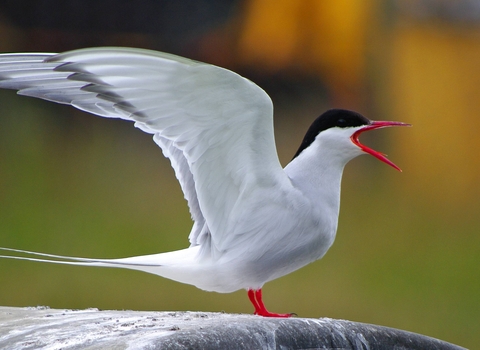
©Gillian Day

©David Tipling/2020VISION
Arctic tern
The Arctic tern is famed for its aggression towards any that would disturb its nest - it will dive-bomb intruders with its sharp beak. Large, noisy colonies can be found on the Farne Islands and Northern Isles, in particular.
Scientific name
Sterna paradisaeaWhen to see
April to AugustTop facts
Stats
Length: 33-35cmWingspan: 75-85cm
Weight: 95-120g
Average lifespan: 13 years
Classified in the UK as Red following a 2024 update to the Birds of Conservation Concern 5: the Red List for Birds (2021).
